Cellozia (Celosia), also called cellozia, is a representative of the amaranth family. However, more recently, this genus was part of the Haze family. The name celosia comes from the word "kelos", which is translated from Greek - "burning, flaming", this is due to the shape and color of the inflorescences, which outwardly resemble the tongues of flame, painted in different colors. In the wild, this plant can be found in areas with warm climates, for example: Asia, Africa, North and South America. This genus unites about 60 species. However, only 3 types of such a plant are most popular with gardeners: pinnate, comb and spikelet celosia.
Content
Celosi features
The herbaceous plant celosia is represented by perennials and annuals; there are also shrubs. In mid-latitudes, this flower is cultivated as an annual because it is not able to survive the frosty winter. Shoots are branched and straight. Alternately arranged leaf plates have an ovate-lanceolate, ovoid or linear-lanceolate shape. Crested, paniculate, or spike-shaped inflorescences consist of small flowers that can have different colors, for example: pink, orange, golden, yellow, red or scarlet. The fruit is a polyspermous capsule.
Growing cellosis from seeds
Sowing seedlings
Almost the only way to reproduce cellosia is generative (seed). Immediately before sowing, the seeds should be prepared, for this they are immersed in a solution of Zircon and Epin for 3-4 hours (1 drop of each preparation for 1 tbsp. Of water). This will allow the seed coat, which is too dense, to soak. Sowing is done in March or the first days of April. For this, the dish is filled with a substrate consisting of vermiculite and humus earth (1: 1). Sowing should be carried out sparsely, the seeds should only be distributed over the surface of the soil mixture, and pressed into it. You do not need to sprinkle them with soil on top. Crops should be lightly sprayed with water from a spray bottle.The dish must be covered with glass or foil on top and removed to a well-lit warm (from 23 to 25 degrees) windowsill, while protecting it from direct sunlight. Crops must be systematically aired and watered, and condensate must be removed from the shelter in a timely manner. In the event that you do not want to engage in picking plants, the seeds should be sown in individual cups. The first seedlings can be seen after about 8 days.


Watch this video on YouTube
Seedling care
Seedlings need a mandatory four-six-hour illumination. The fact is that at this time of the year the daylight hours are not yet long enough. If you sowed seeds in one container, then the seedlings will have to be picked 2 times. The first pick is carried out after the seedlings have 2 or 3 true leaf plates. When planting, use the same soil mixture as during sowing. Containers are taken shallow, only 4-5 centimeters. The distance between seedlings should be 50 mm. After the dived plants take root, they should be fed simultaneously with watering, for this they use a weak solution of complex mineral fertilizer for flowering plants. After the seedlings become stronger, they make a second dive into a deeper container, or you can use a scoop to carefully pull out each seedling along with a lump of earth and plant them in separate pots (it is recommended to use peat-humus). After the plants are taken, you will need to feed them a second time in the same way as the first.
Planting cellosis in open ground
What time to plant
Planting seedlings in open soil is carried out after the air and soil warms up well, and at the same time the frosts will be left behind. As a rule, disembarkation is carried out from the middle to the last days of May. The site must be well lit and drained, protected from wind gusts. In the event that the soil in the selected area is acidic, then before proceeding with planting seedlings, it will need to be limed. Remember that you cannot fertilize the soil with fresh organic matter, since celosia reacts extremely negatively to it.
Landing features
This flower should be planted in almost the same way as most other garden flowers. When planting, it should be borne in mind that young bushes have a very delicate root system that can be easily injured. Therefore, it is recommended to use the transfer method when transplanting plants into open soil. If the flowers grow in individual peat-humus pots, then planting should be done directly in them. If the species or variety of cellosia is tall, then a distance of 25 to 30 centimeters must be observed between the bushes, and if it is undersized, then from 15 to 20 centimeters.
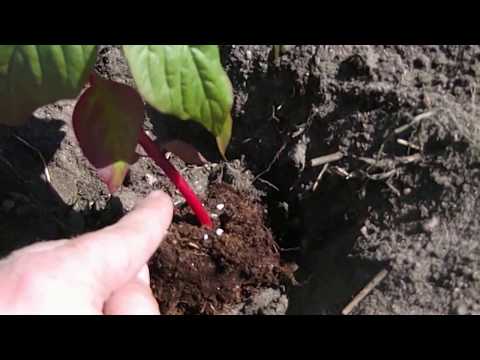

Watch this video on YouTube
Care features
It is quite simple to grow celosia in your garden, but you should take into account several nuances. Seedlings planted in open ground and caught even under a weak frost can die. And this plant also reacts negatively to waterlogging of the soil. When caring for the target, it is imperative to take into account these nuances. Watering should be done only with prolonged drought and heat, while the leaves should fall off the bush and new peduncles should stop growing. Do not forget to feed these flowers once a month, but at the same time nitrogen-containing fertilizers for this purpose should be used with great care, because if you overfeed the cellosis, it will stop blooming, but the foliage will be very thick. Also, do not forget to systematically loosen the soil surface around the bushes and weed.
Diseases and pests
When growing seedlings of such a plant, it is not necessary to allow the substrate to become waterlogged, since this may cause a black leg to develop.If the plants begin to hurt (a black spot has appeared at the base of their stem), then the surface of the substrate should be loosened and sprinkled with a thin layer of wood ash. Do not water the seedlings for a while. If you saw aphids on the bushes, then you can get rid of it with the following mixture: 2 tbsp. water to combine with 1 tbsp. vegetable oil and with 2 small spoons of liquid soap. The bushes should be processed in the evening, while this procedure must be repeated several times. The break between sessions should be several days. Such a flower is highly resistant to other diseases and pests.
Celosia after flowering
Seed collection
To get cellosis seeds, you should pick several pieces of inflorescences that have begun to fade. They are placed in a dry vase and removed to a gloomy place. After the inflorescences are completely dry, seeds need to be removed from them, for this they are simply shaken over a newspaper sheet. The seeds that have fallen together with the garbage must be blown out, and then poured into a box and stored. If desired, you can collect seeds in a different way. To do this, they are hung with inflorescences down, and a newspaper sheet is placed under them. After the seeds are dry and ripe, they spill out onto this leaf by themselves.
Wintering
As a rule, in the autumn, the remains of celloses are disposed of. However, if you wish, you can create dry bouquets from the inflorescences. To do this, you need to cut off several flowering inflorescences of a tall variety, remove the leaves from them and bring them into the room. They are tied in a bundle and placed in a well-ventilated, unlit room. Wait for the bright blooms to dry completely. Then they are placed in a vase without water.
Types and varieties of cellosia with photos and names
Below will be described the types and varieties of cellosia, which are happily cultivated by a huge number of gardeners. It should be borne in mind that the most popular in middle latitudes is silvery celosia, which has 2 varieties:
Celosia silvery comb, or "cockscomb" (Celosia argentea f. Cristata)
The height of the bush is about 0.45 m, however, there are also lower varieties. The color of the leaf plates depends on the variety and can be burgundy, golden, green or bronze. Large inflorescences outwardly similar to the crest of a rooster consist of small flowers of orange or red-purple color. Flowering begins in mid-summer and ends in October. Varieties:
- Impress - a bush in height reaches from 20 to 25 centimeters, the color of the leaf plates is dark red, and the inflorescences are red;
- Atropurpurea - the height of the bush is about 20-25 centimeters, the color of the stem is light pink, the inflorescences are purple, the leaf plates are pale green;
- Imperialis is a not very tall bush with dark red stems and inflorescences, as well as purple leaf plates with red veins.
Celosia argentea f. Plumosa
Some varieties have a height of about 100 centimeters bushes, but there are also dwarf and undersized. At the tops of straight stems are large panicle inflorescences, which can be colored in various shades of red, orange and yellow. The color of the leaf plates can be pale green, red, deep green and pink. Flowering begins in July and ends in October. Varieties:
- Goldfeder - a stunted bush is decorated with golden inflorescences;
- Tomsoni Magnifica - the height of a tall bush is about 0.8 m, the inflorescences are burgundy, the leaf plates are pale green;
- Fakelshine - a tall bush has paniculate inflorescences of a deep red color;
- New Onion - a bush in height reaches from 0.35 to 0.4 m, the color of the inflorescences is orange-yellow, and the leaf plates are purple-purple.
Celosia spicata, or Hatton's celosia (Celosia spicata)
Today it is not in great demand among gardeners of mid-latitudes, but the popularity of this species is gradually growing.The height of the bush can vary from 0.2 to 1.2 m, small panicle inflorescences that look similar to spikelets can be colored either yellow, red and orange, or white. Coral spikelet celloses deserves special attention.

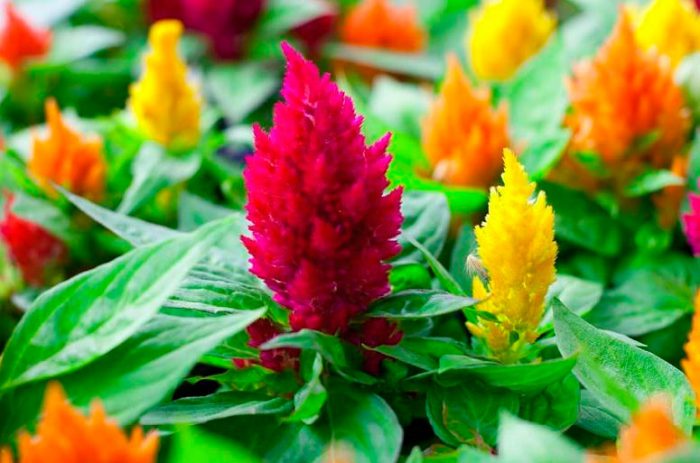
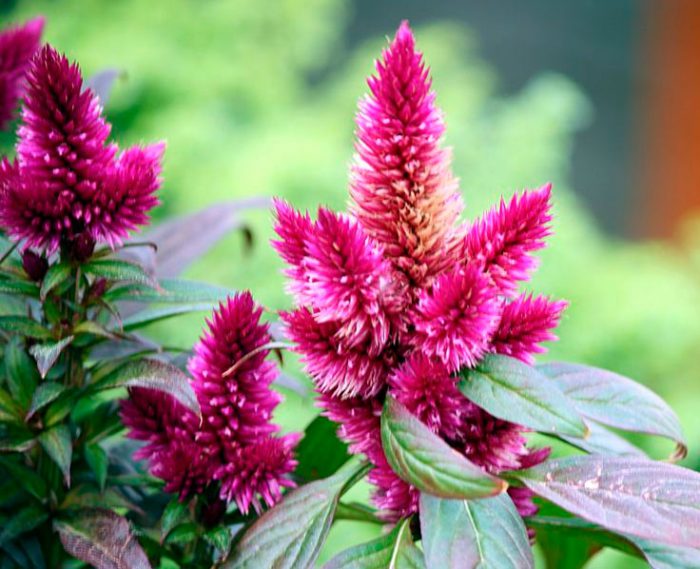
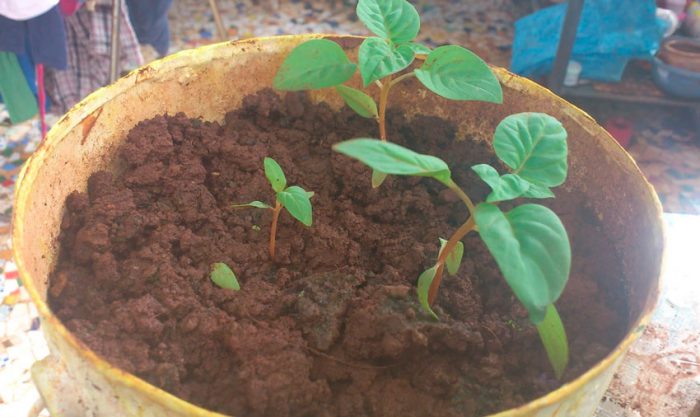
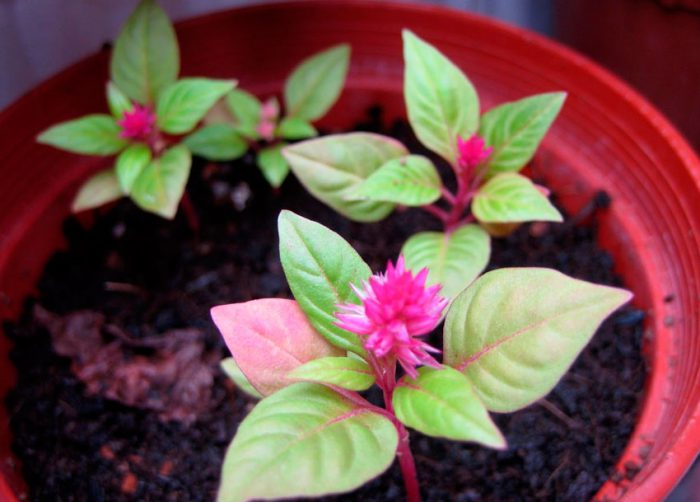
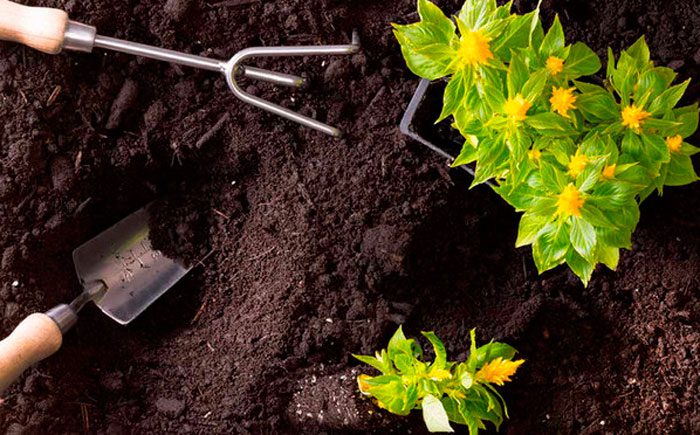
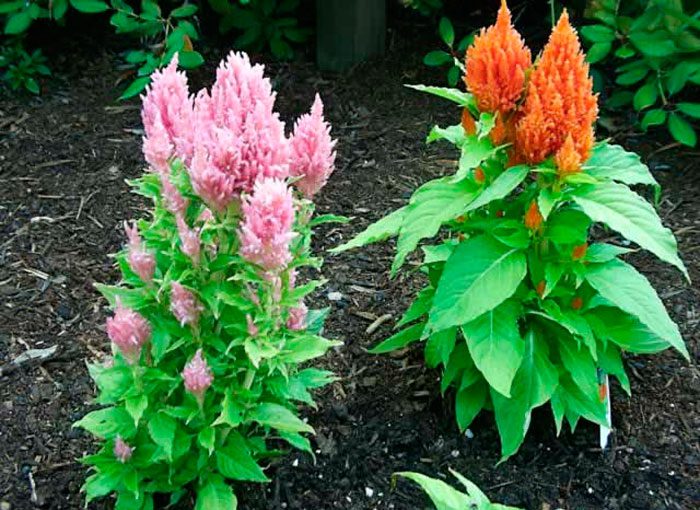
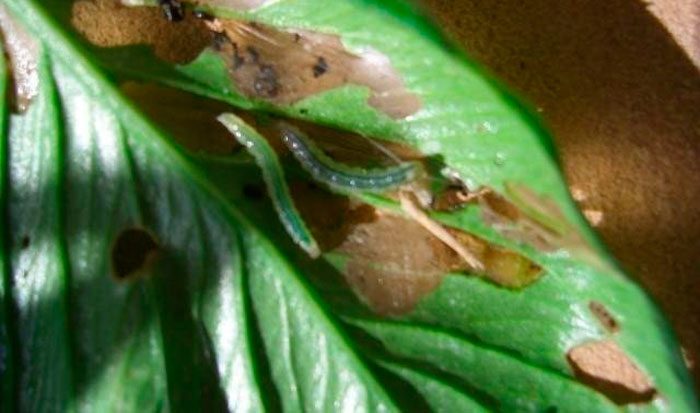
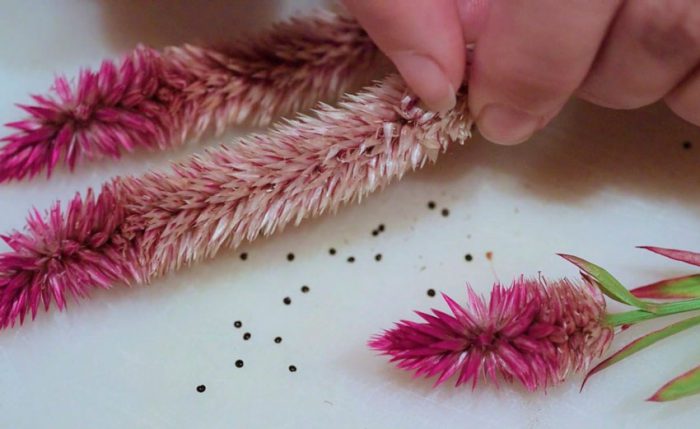
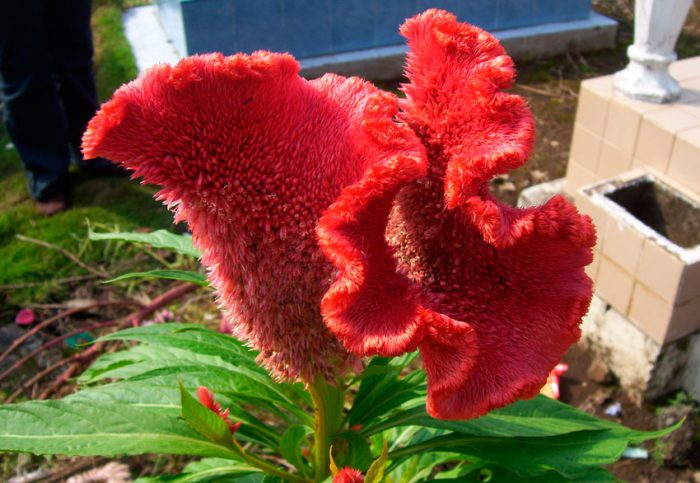
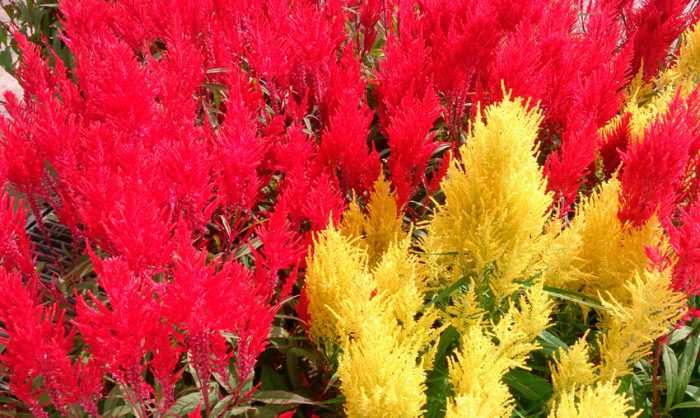
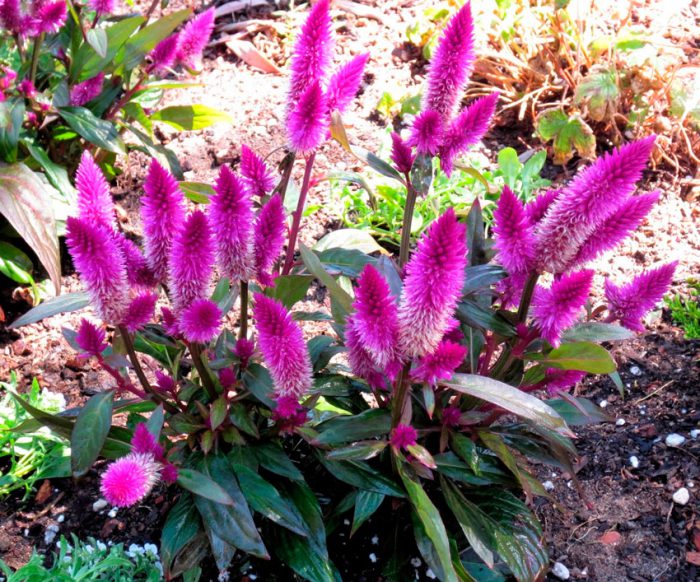

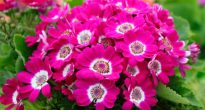

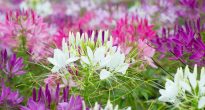






She planted a paniculata and a scallop, very beautiful flowers. I planted the comb in a flower bed about a meter and a half in diameter, and they surrounded it with a fence made of willow twigs, it turned out such a basket. I planted it only with a comb-like plant, how beautiful it looked, everyone admired. This year I decided to try the spikelet, it should also be planted with one large cuticle, it will probably be beautiful. And yes, celosia is very fond of picking.
What creative women we are! Praise to the artist!)
Hello. Yesterday I bought a Celosia spicata in a store. But I put it at home. Please tell me what advice on care will be. It's early October. What can I expect in terms of flowering? Is it still an ANNUAL plant? When to count the end of the year? I bought 3 plants in small pots and put them in pots. Do I need to transplant them all together? Thank.